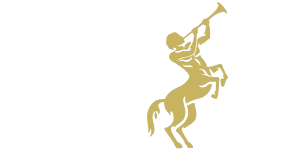-
Female Medical Practitioners
Women in Medicine
When it comes to women in medicine, you might have most recently heard of the ‘Edinburgh Seven’. In 2019, seven women, who had not been able to qualify as doctors when they first attended university in 1869, were posthumously awarded honorary degrees in medicine. Sophia Jex-Blake is considered the pioneer and her application experience at Edinburgh University garnered national attention and eventually led to six more women joining her cause. It was not until 1896, however, that the first female doctors graduated from the University of Edinburgh.
The Journey Down South
While the Highlands and Islands surveys pre-date this significant milestone in female medical education, they give us a bit of an insight into how some women in the parishes were perceived and what work they did. As some of our surveys show, there was, in addition to a lack of university educated practitioners (i.e. male doctors), also a lack of properly qualified women who could attend to medical emergencies and issues within the parishes: a ‘very inadequately qualified midwife’ or an acting midwife who, however, ‘does not profess a knowledge of medicine’. Sometimes anecdotes about the midwives can show how they were perceived by some: ‘There are two acting midwives in the parish, and who in all likelihood will not quarrel as they are about thirty miles from each other.’
It was common practice to hand over many of what were seen at the time as the more ‘menial’ tasks to the women, including midwifery. These were often considered on the same level as ‘household’ tasks and despite the fact that female parishioners, midwives and nurses faced the same hardships as male practitioners, their services were frequently disregarded or heavily criticised. There is, however, a move mentioned in the surveys towards sending women to receive some form of medical education and training. One woman is said to have been educated by the Duchess of Argyll, Elizabeth Campbell, herself and sent to Edinburgh to receive her diploma. Another minister in Stromness also asked for some women to be trained in midwifery down south, although he also wishes that this education is not particularly expensive. The Highlands and Islands simply did not seem to have the infrastructure and resources to be able to adequately train (or fund training) for women who wanted to practice medicine in some shape or form.
Female practitioners between doctors and parishioners
While they were not always regarded as equally qualified compared to male doctors and surgeons, it can be said that the women who provided medical aid and assistance were often closer to the community and it was easier for them to build up a relationship of trust. Frequently, midwives and nurses also offered advice on non-childbirth or medicine related issues, such as diets or basic hygiene. Throughout various periods of history, there has frequently been a certain level of distrust of medical professionals. This scepticism was partly strengthened by growing medical interest in reproduction and female anatomy - people sometimes associated doctors with ‘carnal knowledge’.
The distrust of medical practitioners can also be linked to a language barrier and possibly the preference for folk remedies. For more information on these aspects, feel free to have a browse around our other posts.
References and further reading:
https://www.scotland.org/features/medicine-women
https://www.bbc.co.uk/news/uk-scotland-edinburgh-east-fife-48885287
Dr Patricia Whately (2013), “The Development of Medical Services in the Highlands and Islands of Scotland, 1843-1936”, PhD at University of Dundee
Roy Porter, ‘A touch of danger: The man-midwife as sexual predator’, in Sexual Underworlds of the Enlightenment, ed. by G.S. Rousseau and Roy Porter (Chapel Hill: University of North Carolina Press)

